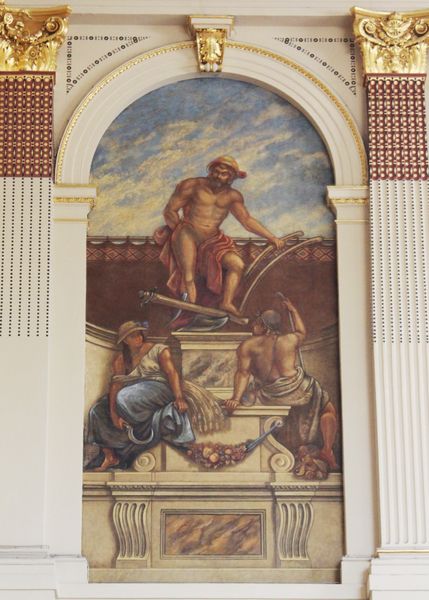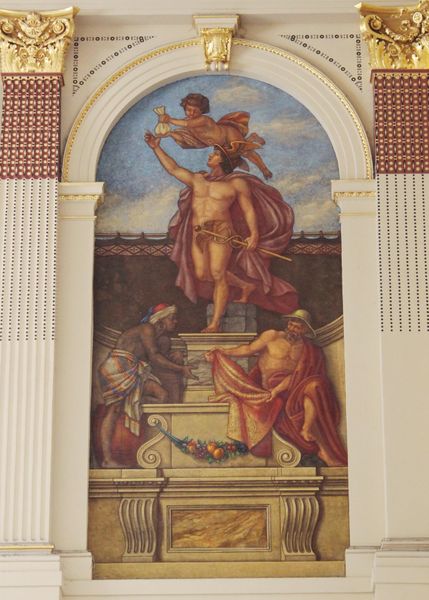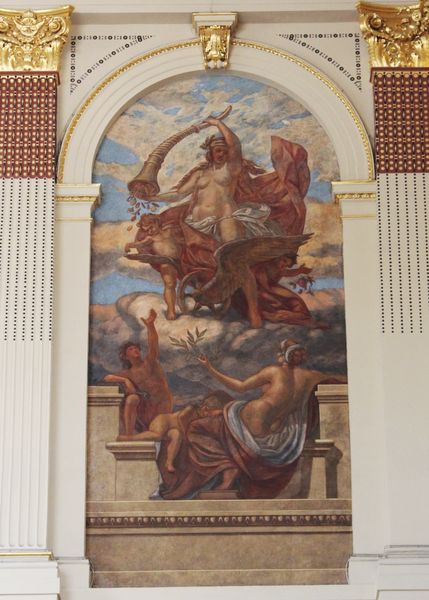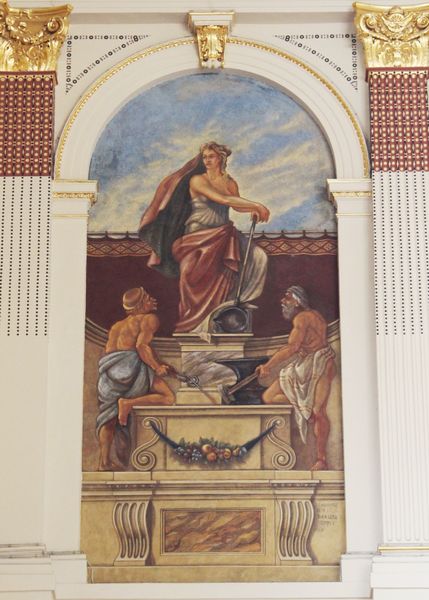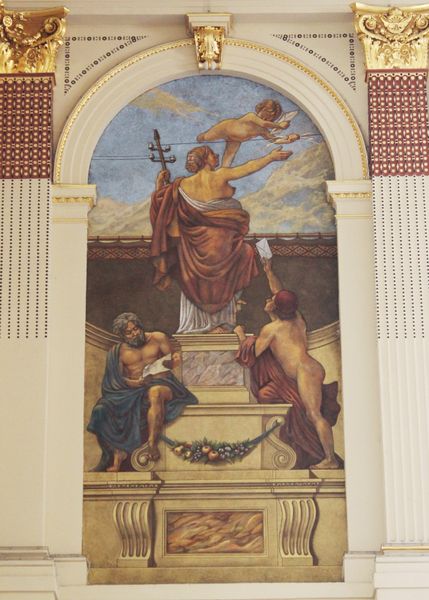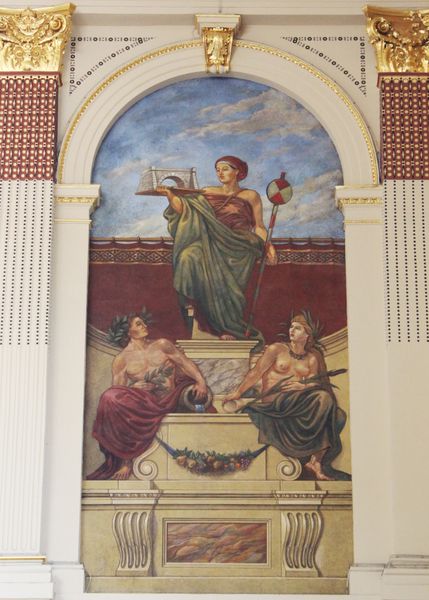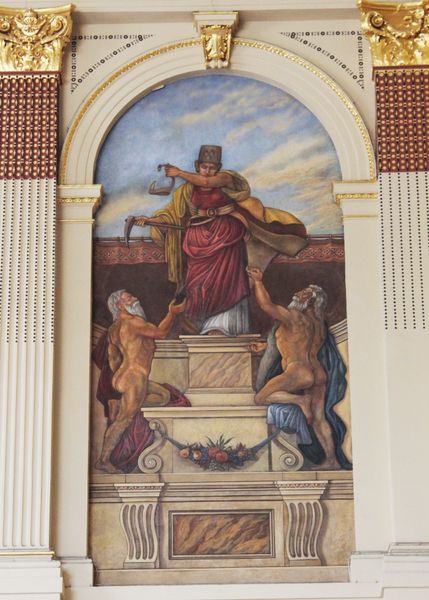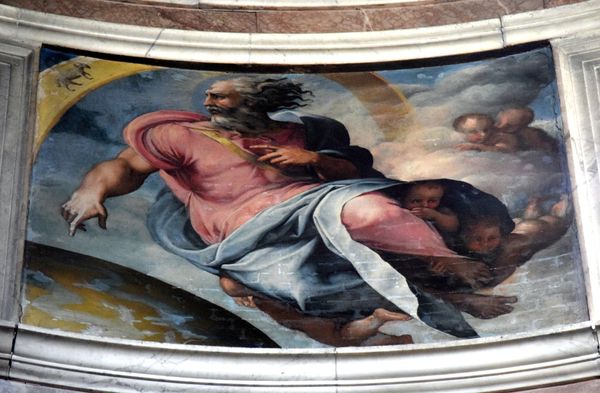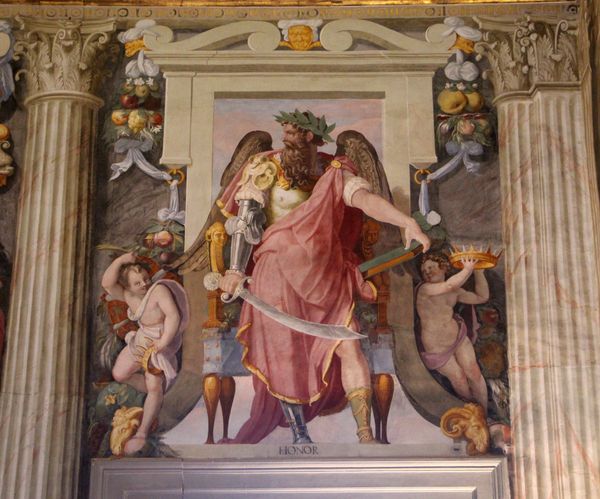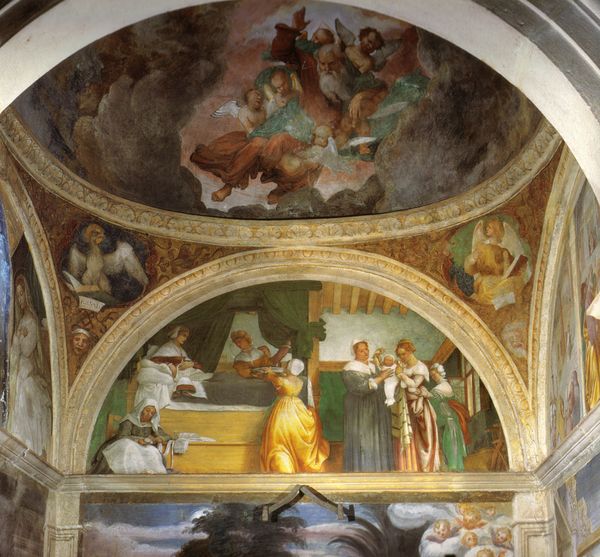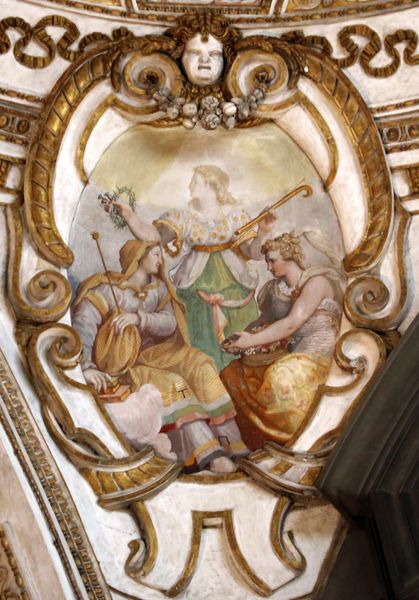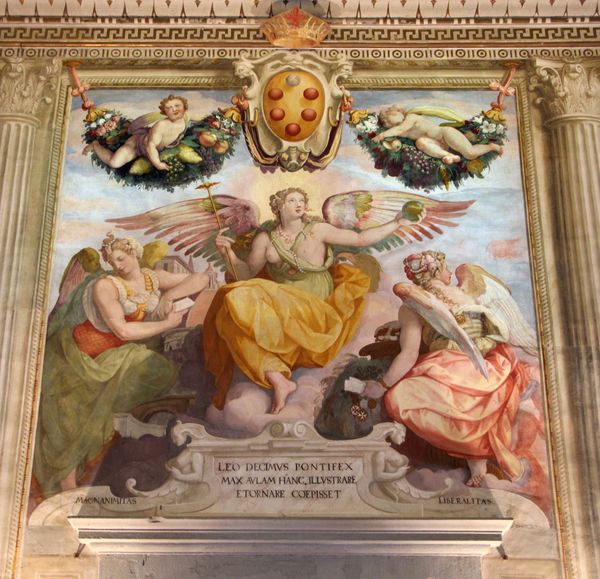
Copyright: Public domain
Károly Lotz created this mural, called Progression, in Hungary, likely in the late 19th century, using classical imagery to convey ideas of advancement and conflict. The image presents a dynamic scene of struggle and triumph, with classical figures engaged in battle. The idealized bodies and dramatic poses evoke the art of ancient Greece and Rome, which were often used to symbolize noble virtues and historical narratives. The victorious figures ascending towards the heavens suggest a narrative of progress, where conflict leads to enlightenment and advancement. This mural likely reflects the cultural and political aspirations of Hungary during a period of national awakening. By referencing classical antiquity, Lotz connects Hungary to a broader European tradition, while also suggesting the nation's potential for greatness. Understanding the historical context of this mural requires research into the cultural and political climate of 19th-century Hungary, as well as the artistic conventions of academic painting. Only then can we fully appreciate its meaning as a statement of national identity and aspiration.
Comments
No comments
Be the first to comment and join the conversation on the ultimate creative platform.
